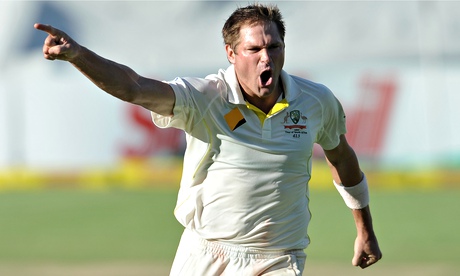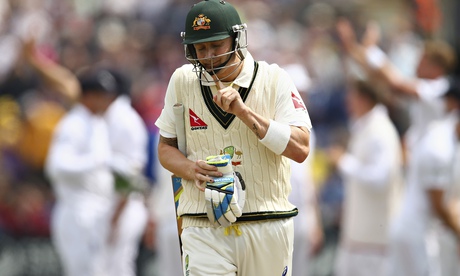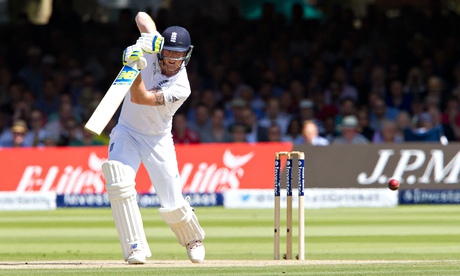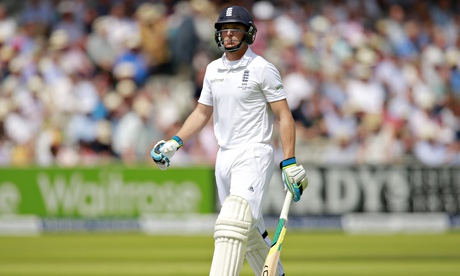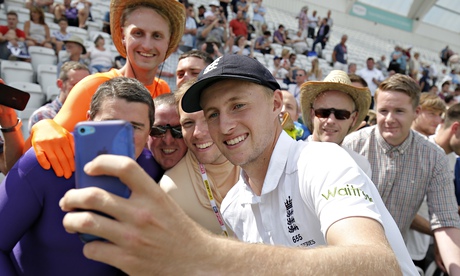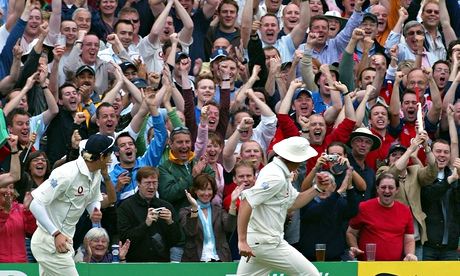For so long now Australia’s cricketers have been able to scan a map of the world and proudly thumb the distant locations they’ve conquered like swashbuckling explorers – that 75-year stranglehold at Lord’s, 1995 and the pitch-invading ecstasy at Sabina Park, Jamaica.
In light of the expanding list of destinations and team totals now associated with dreadful batting collapses, perhaps that sporting atlas should also feature trigger warnings for Australian fans. Look, there’s Cape Town 47. Ah, Leeds 88, you really snuck up on us there. Melbourne 98? Painful to stumble across you again. Australia posted 301-0 on day one of the Trent Bridge Test in 1989. Now it’s forever stained by the number 60. Glancing at your watch at 8:15am might hurt for a while, too.
Before the arrival of Darren Lehmann’s no-nonsense reign as coach the popular response to these sorts of calamities was to conduct corporate-style reviews, as though clipboards and PowerPoint presentations could fix the long-term inability of even the best Australian batsmen to cope with lateral movement on juicy pitches.
This time Michael Clarke’s retirement from internationals was confirmed even before England had finished their lap of honour, and more decisive and era-ending personnel changes are likely. Lehmann entered the role amid the chaos of Mickey Arthur’s sacking and knows a similar fate awaits all coaches at some point. A two-Test trip to Bangladesh and a three-Test home series against a capable New Zealand side, both loom rather ominously now.
Most of Australia’s Ashes selections made reasonable sense when the squad was first named. The promotion of mature-aged Adam Voges after his 1,358-run Sheffield Shield wonder season was vindicated by a high-quality Test century in the West Indies en route and his extensive experience in English conditions sealed the deal. Out of the wreckage of this tour he’s unlikely to remain in the side and Shaun Marsh is only likely to reappear as a stop-gap.
In the most dramatic but not unrealistic scenario, four of Australia’s top six batting positions will open up in the next 12 months with only David Warner and Steve Smith likely to carry the team on beyond the next Australian summer. The candidates for those positions aren’t exactly irresistible, but then neither were a host of Australia’s golden era gems when they first won caps.
That generational change will most likely include Usman Khawaja, placed on notice when he was handed the captaincy of the A team for their current Indian tour and a player of undoubted class. That leadership role is quite a turnaround for a player who once had a reputation for wandering around with his hands in his pockets and his mind in neutral. At the very least his one-day form will appeal.
The imminent departure of Chris Rogers is honestly now more worrying than that of Clarke because it will rob Australia of its steeliest and most reliable top-order contributor. No player of his ilk exists in the domestic game or is likely to appear out of the blue, but the determined progress of 22-year-old Western Australian opener Cameron Bancroft is reason for a quiet optimism.
Bancroft’s hunger and aptitude for long stays at the crease sets him well apart within the next tier and even some Test incumbents; 150 from 267 deliveries against India A in Chennai last week drew warm praise from the stone-walling grand master himself, Rahul Dravid, and followed Sheffield Shield stays of 271, 301 and a marathon 567 deliveries last season, the latter in scoring 211 against New South Wales. The slow-scoring right-hander might not be the batsman Australia wants but right now he’s the type it needs.
Left out somewhat unluckily in recent times was Joe Burns, dropped after two half-centuries in last summer’s Tests against India and a heavy scorer at Shield level. At only 25 his age and scope for improvement should appeal, as will that of fellow Queenslander Chris Lynn, a formidable striker of the ball and possessing of a Boon-like vocal drawl and intensity. Any young Australian batsman with a first-class 250 to his name like Lynn should command considered attention at this point. At 31, forgotten man Callum Ferguson also still has time to make his run.
Thankfully for Australia their bowling is not in the same state of crisis, with Nathan Lyon nailing down the spin role without fanfare and a World Cup-winning rotation of pacemen proving erratic but often potent in this Ashes loss. Back-ups Pat Cummins, Peter Siddle and James Pattinson hover close all the same but Mitchell Johnson certainly can’t be expected to torch world-class batting line-ups with the same regularity as he reaches his mid-30s. Jackson Bird and Gurinder Sandhu both boast lateral movement but not the speed requirements set down by Lehmann. Sadly, Ryan Harris hasn’t been cloned yet.
This was an Ashes series in which the quality of Australia’s batting fell away quickly and disastrously, flaky performances borne of an understandable desire to squeeze one too many heroic campaigns from a group of hardy veterans. The familiarity of that refrain cannot have been lost on England loyalists now that the shoe is on the other foot.
For all the noises about disharmony in Australia’s ranks – and those are always louder when the wins dry up – the strong likelihood is that its group dynamic is about to be shaken up anyway. The shape it takes from there will dictate whether the cricketing milestones Australians attach to the far-flung cities of upcoming tours draw smiles or grimaces.


